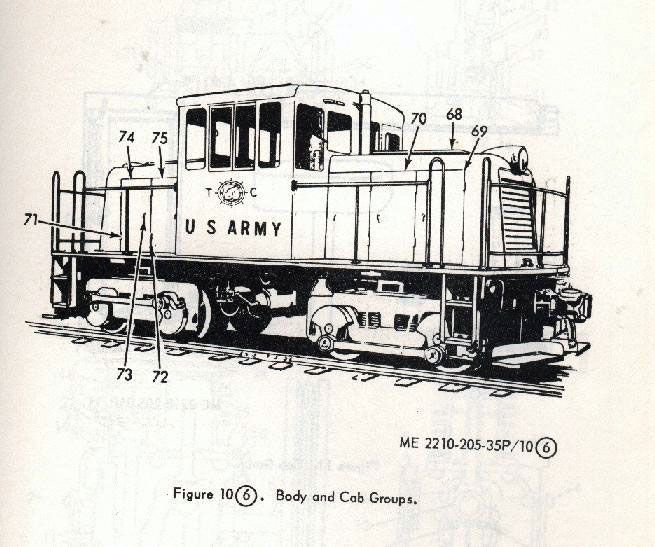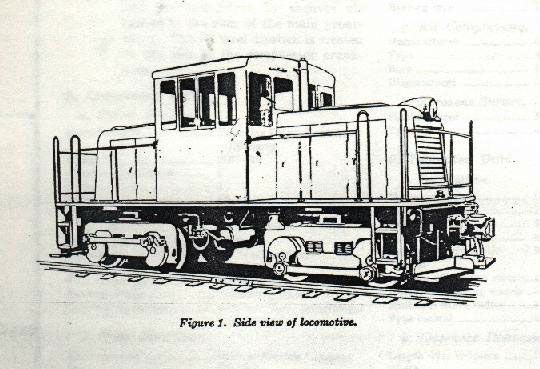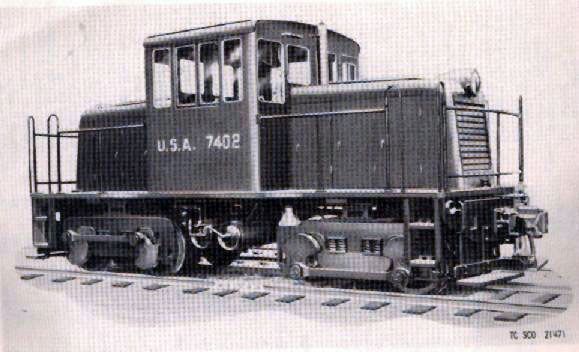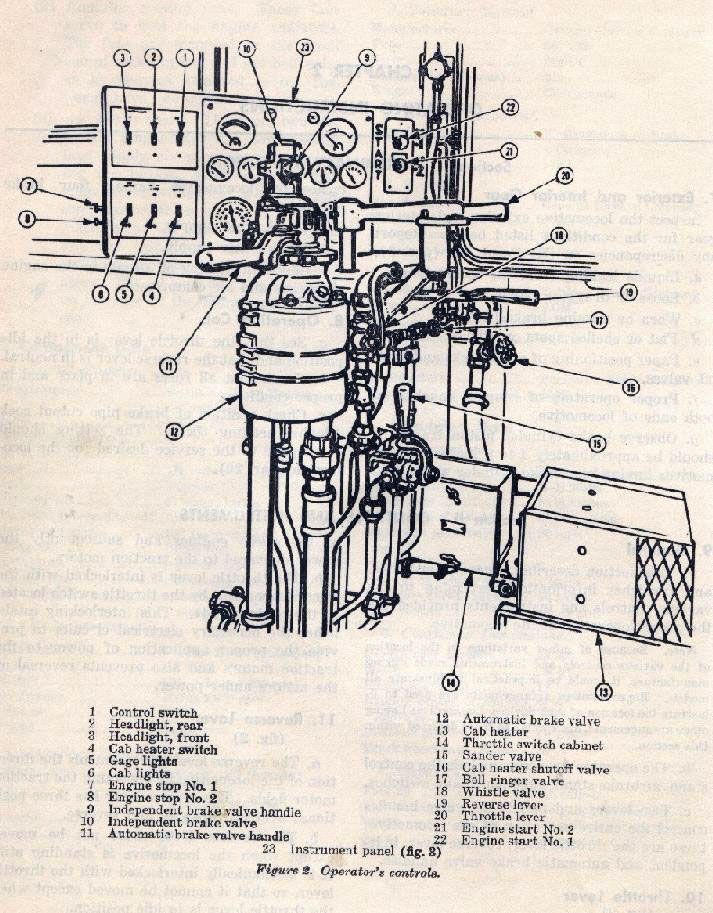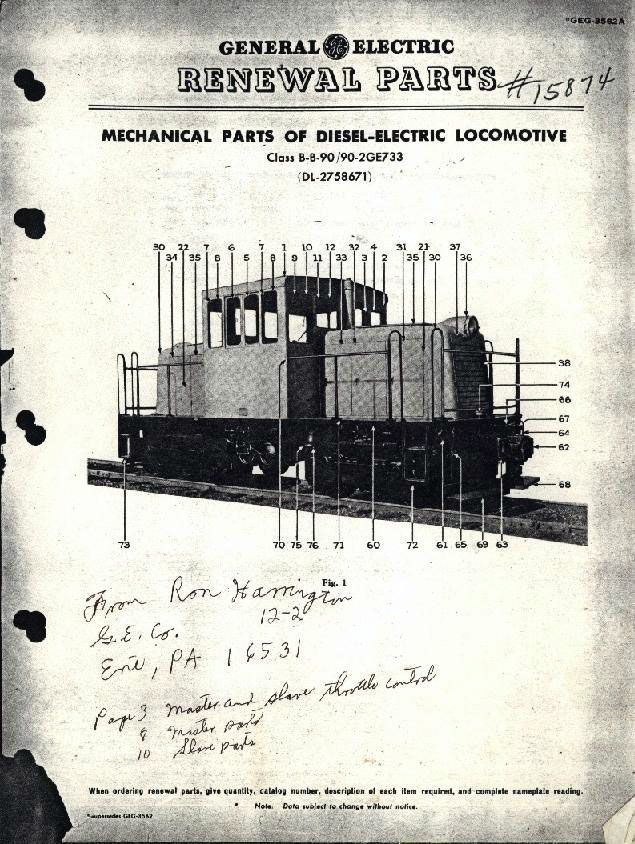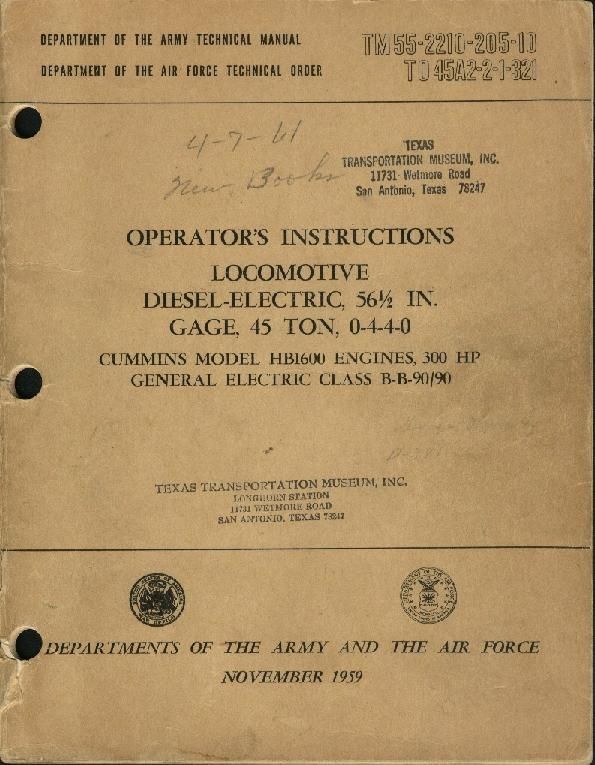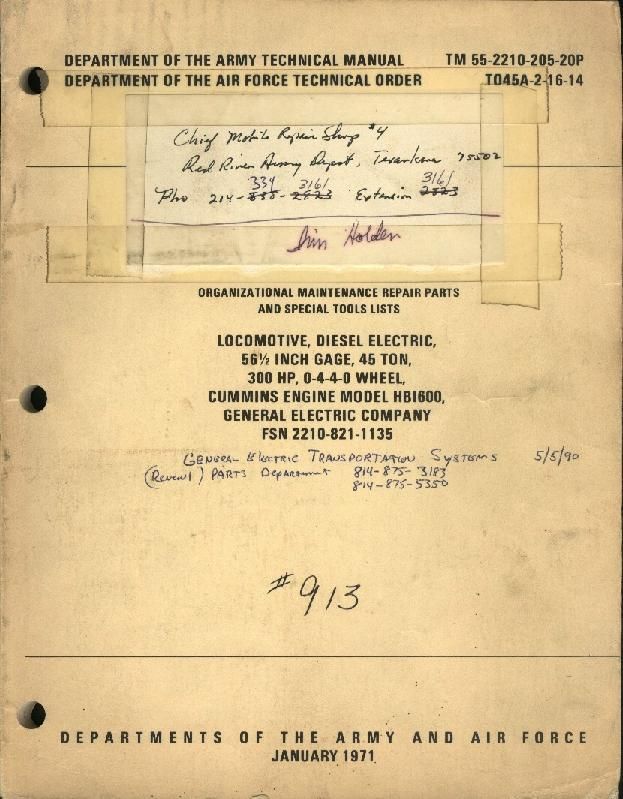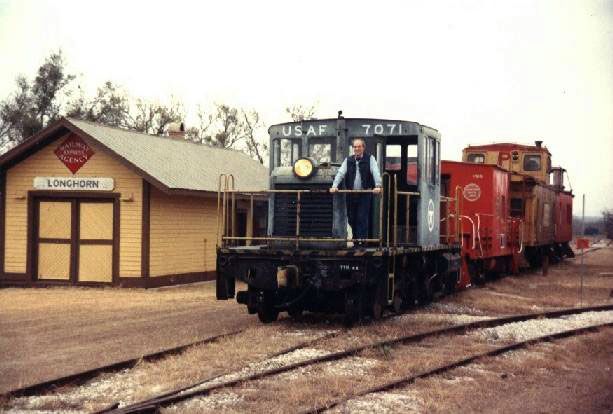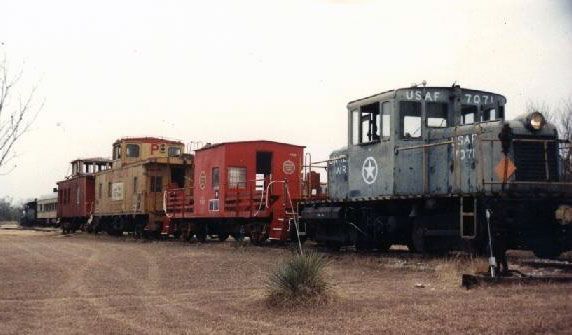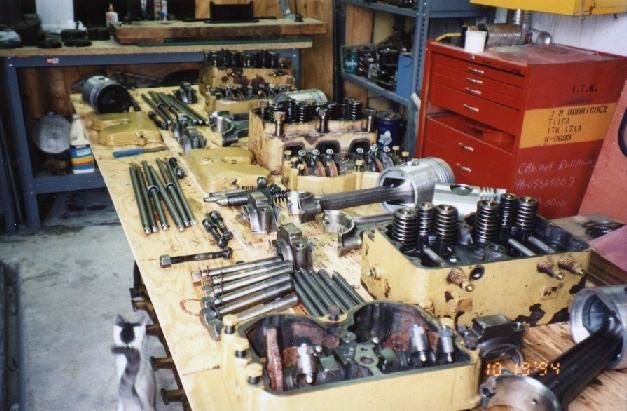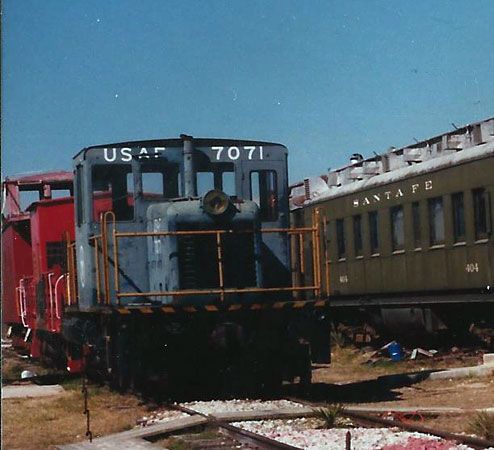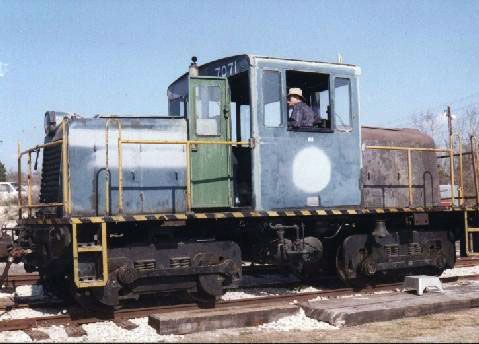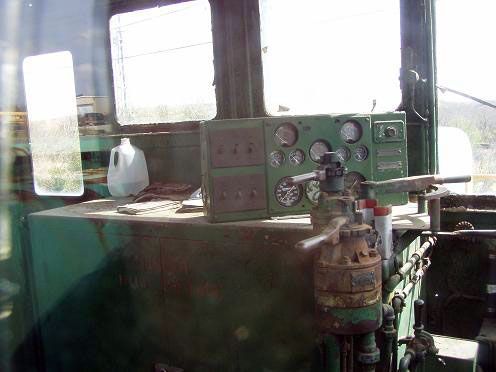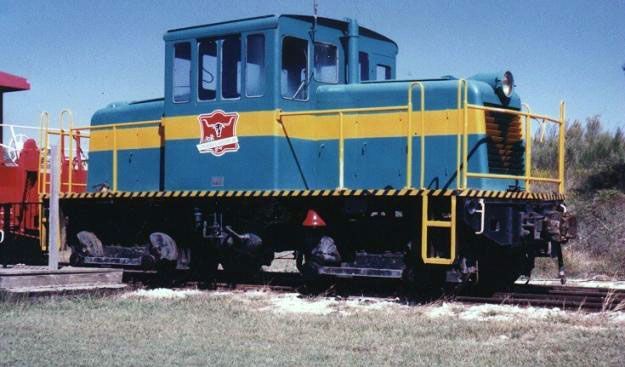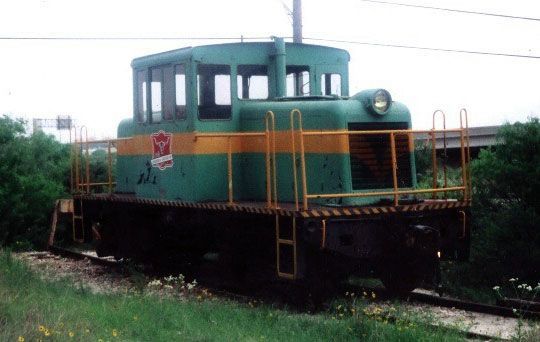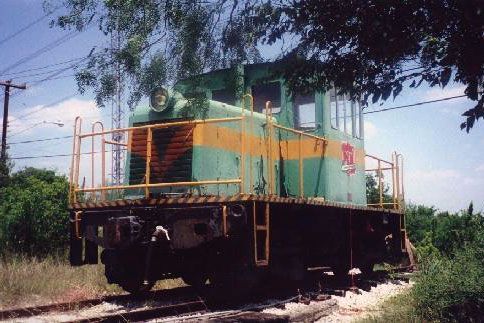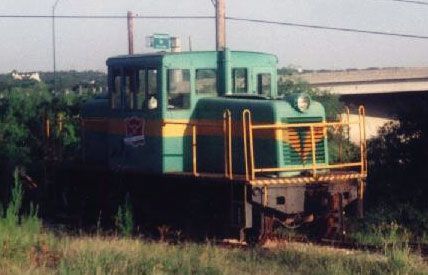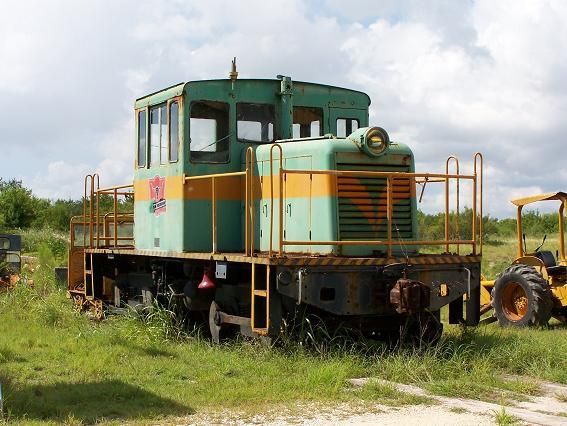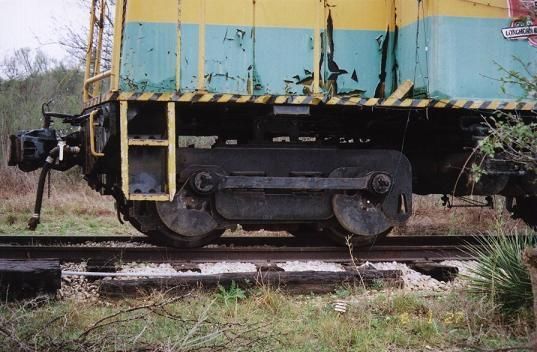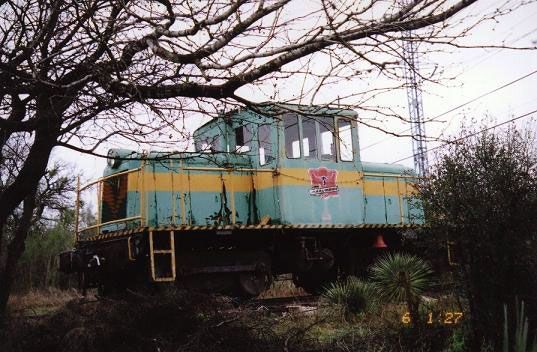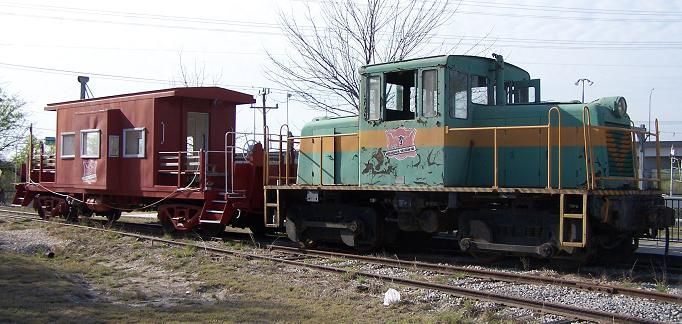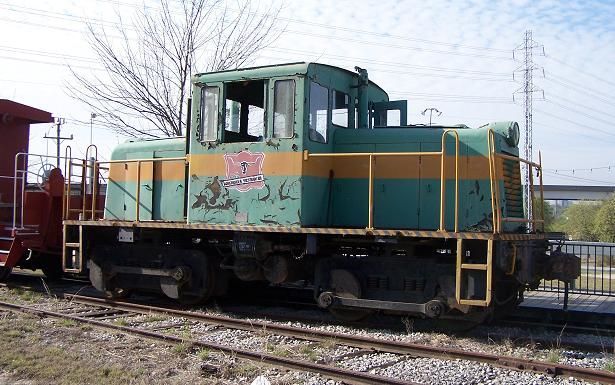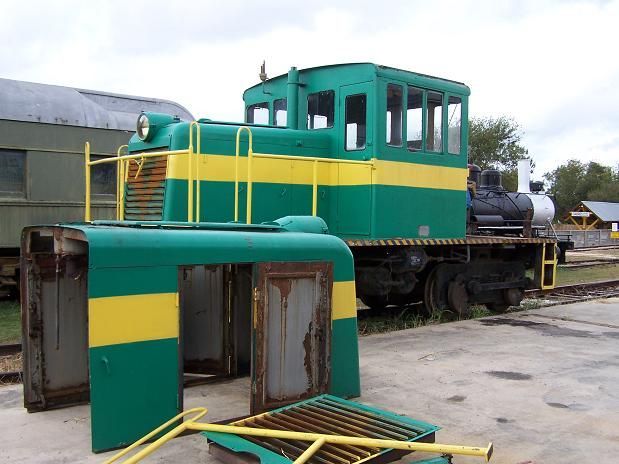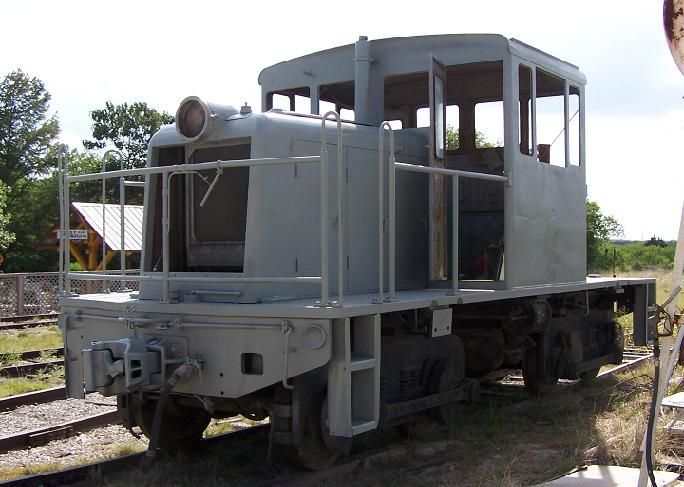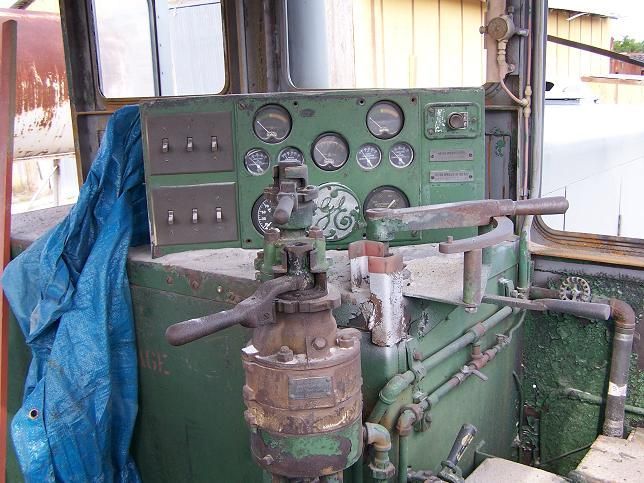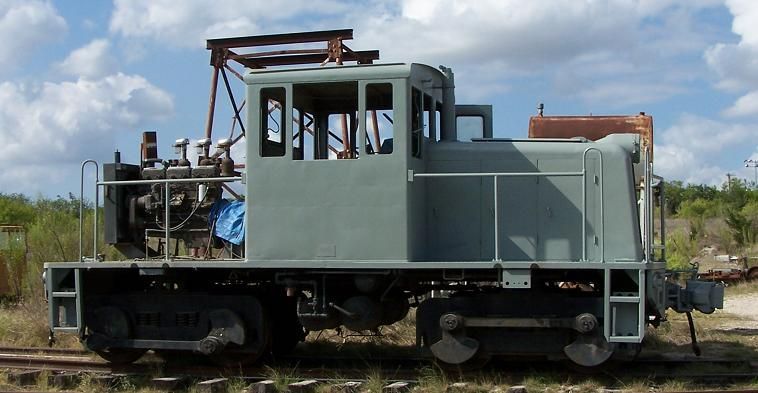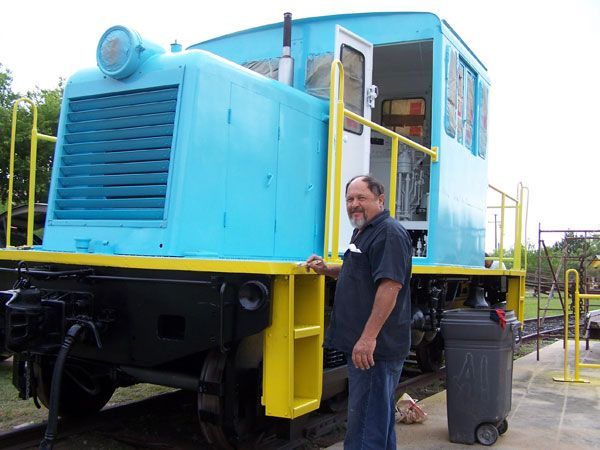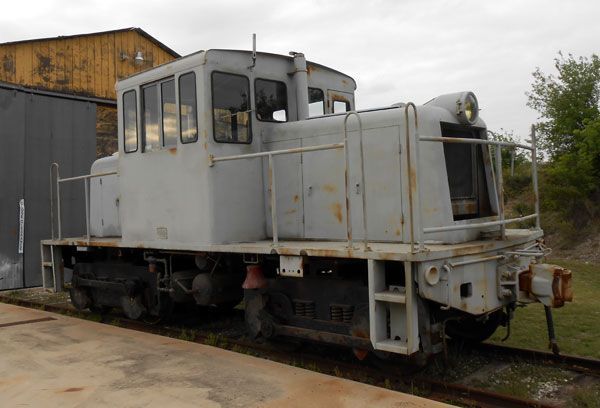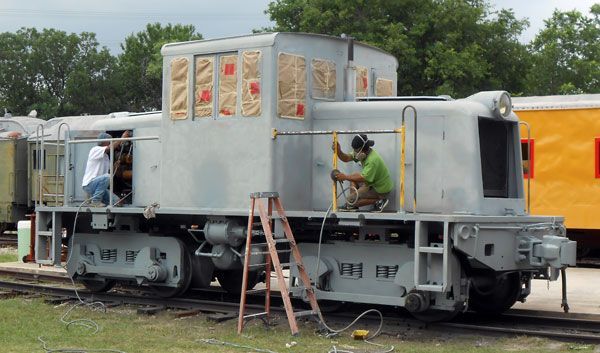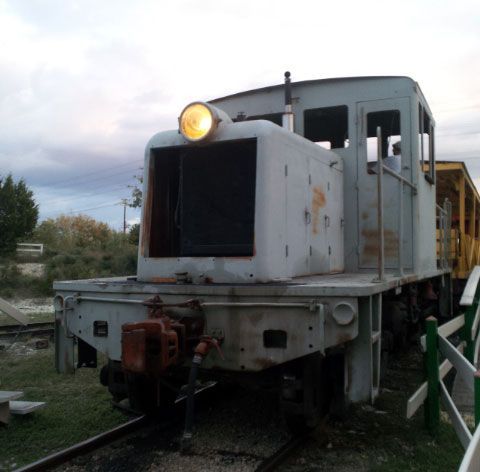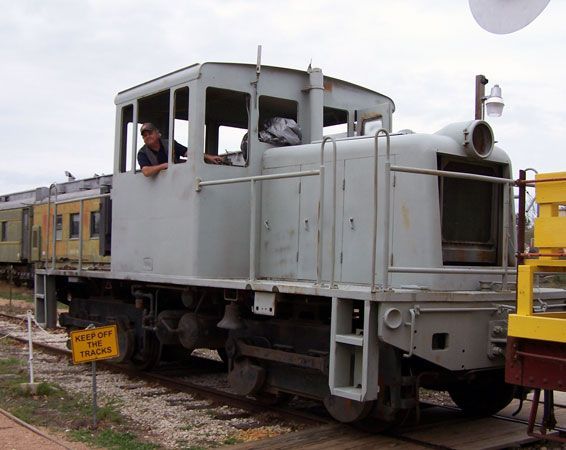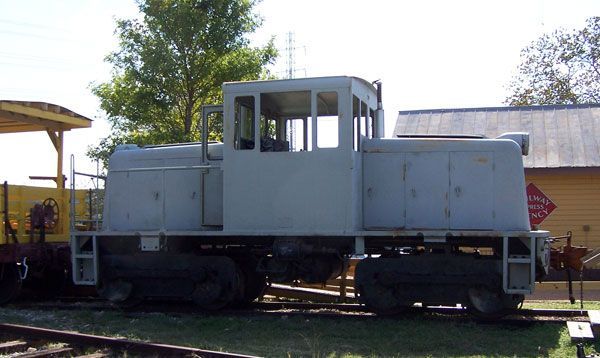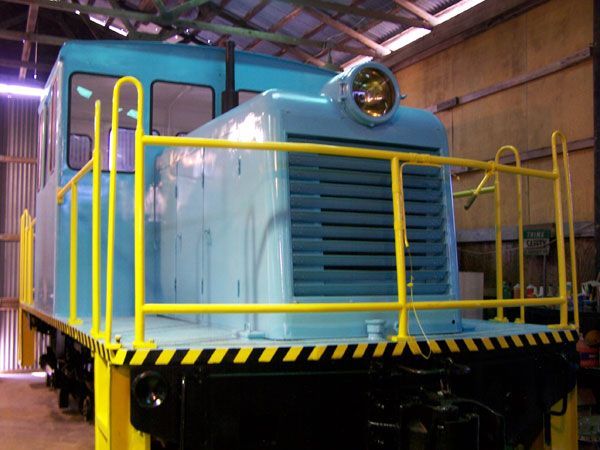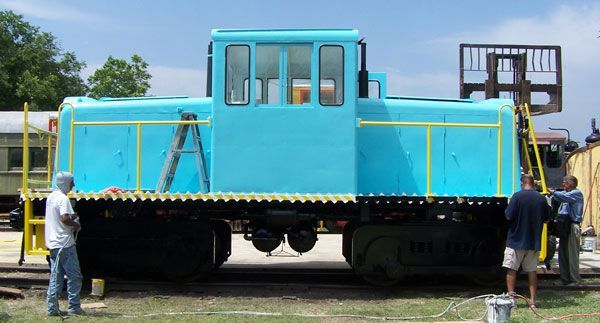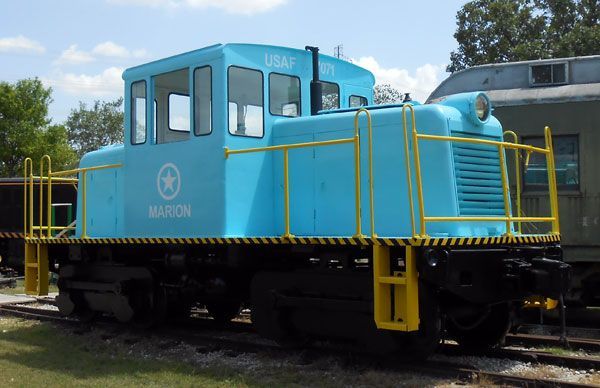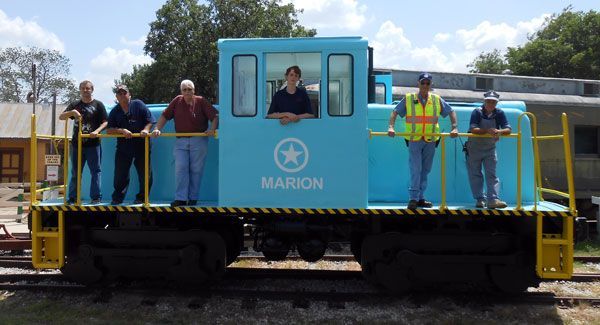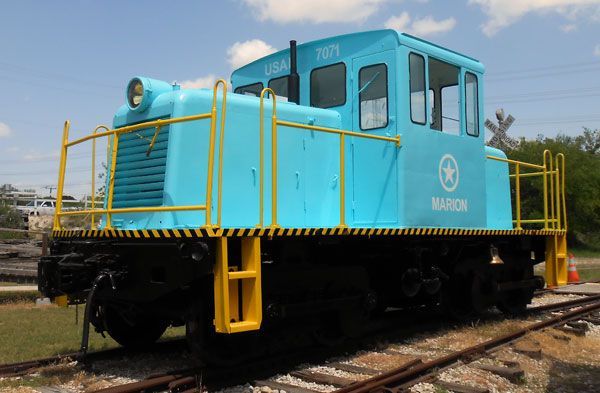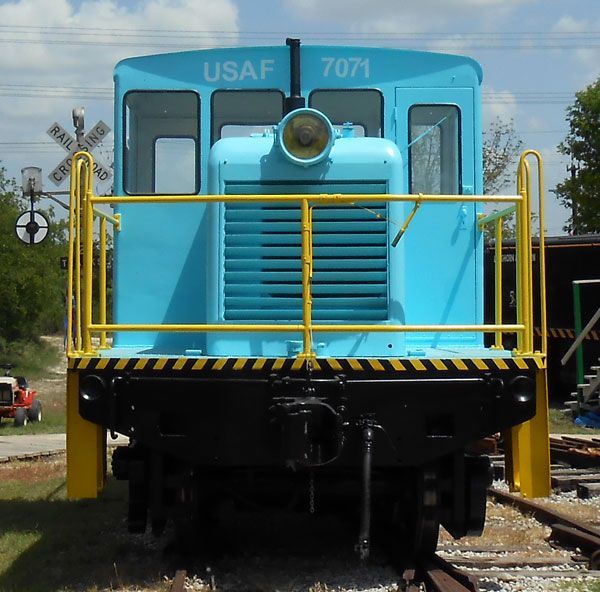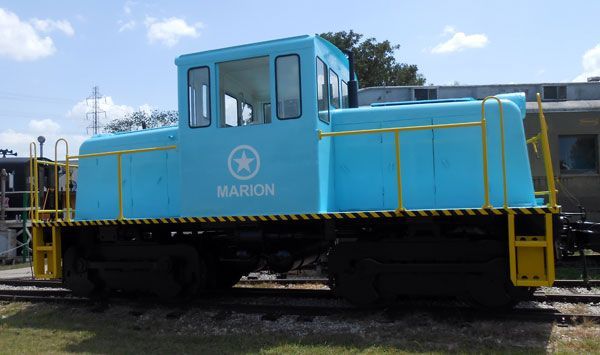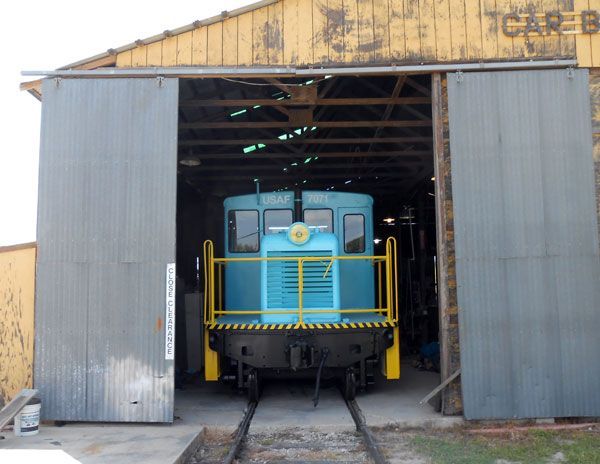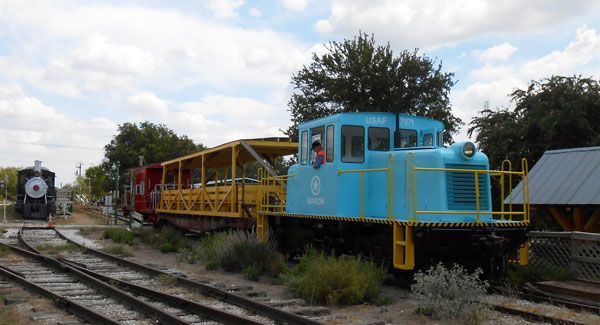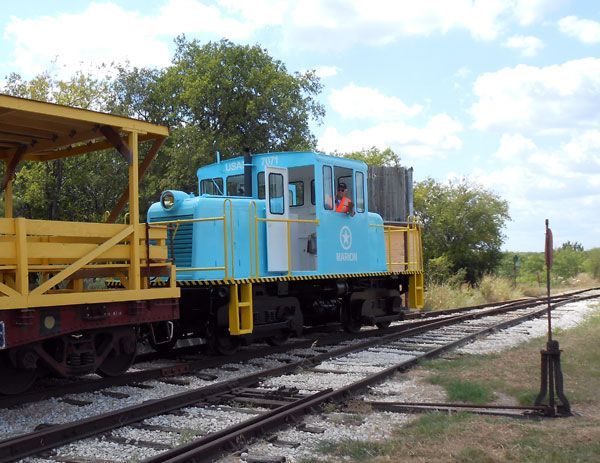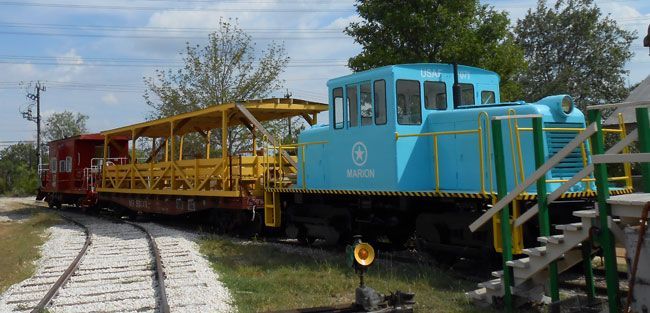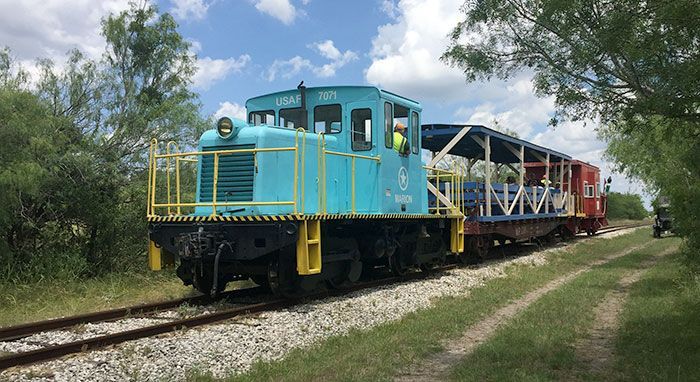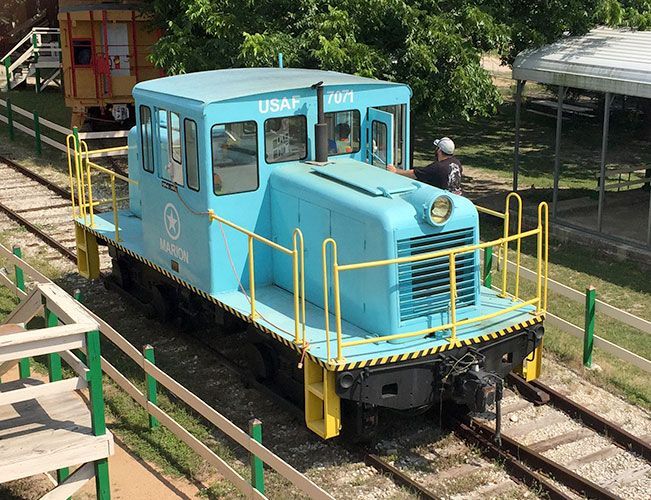1942 GE 45-Ton Diesel-Electric Switcher
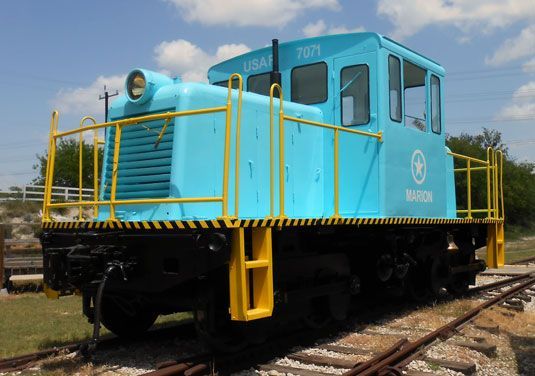
Technical Specifications
Year:
1942
Builder:
Model:
45-Ton Switcher
Production:
1940 - 1956
B-B
4'-8 1/2" (1,435 mm)
Minimum Curve:
50' (15 m)
Weight:
43 to 50 Short Tons (39 to 45 t)
Two Cummins 6-Cylinder HBI-600
Engine RPM:
1,800 RPM (Max)
Aspiration:
Normally Aspirated
Displacement:
672 cubic inches (11 l)
Two, one per truck. Chain or side rod drive to second axle on each truck.
6 in each of two engines.
Cylinder Size:
4 7/8" x 6"
(124 x 152 mm)
Top Speed:
20 mph (32 km/h)
Power Output:
2 x 150 HP (112 kW)
27,000 lbf (1120 kN)
Locomotive Brakes:
Air
Train Brakes:
Air
This type of locomotive is commonly called a "45 Tonner"
This 45 ton switcher diesel-electric locomotive was built by General Electric in 1942 and was given the serial number 15872. It served with the USAF as # 7071. Its external dimensions and height were kept small to make it easier to be transported on flat cars and by ocean. During WW2, it was shipped to England, and moved fuel and munitions, which were always kept as widely disbursed, around massive airfields. It ended its Air Force service in Tulsa, Oklahoma in the 1970s. It was acquired by TTM in the early 1980s and was our main service locomotive for many years. It is a diesel electric with two 150 HP Cummins diesel engines and two electric traction motors. It uses side rods to provide power to the second axle on its two sets of trucks. This small type of switch engine was one of the very first diesel-electric locomotives to enter service in the USA.
TTM acquired the 45 ton switcher in 1983, fourteen years after moving to the Wetmore Road location. It was bought through the Texas Surplus Commission, which allows Not-For-Profit organizations to acquire surplus equipment from the military and other state agencies at costs much lower than are available on the open market. It's arrival inspired a doubling of main line trackage. This was accomplished almost single-handedly by museum volunteer, Rick Henderson. With the addition of this diesel electric and the longer track, offering rides to visitors became a regular activity.
The locomotive is unusual in that although it is a diesel electric, it still has side rods connecting the driving wheels. As a 0-4-4-0 locomotive, it has two 150 HP Cummins diesel engines and two General Electric traction motors. However, all of its 34 inch wheels are considered to be drivers. One axle apiece on the front and rear trucks are directly connected to the traction motors, and the side rods then transfer effort to the second set of wheels. Both engines have six 4 7/8 inches cylinders, with a 6 inch stroke. The locomotive's maximum speed is 20 MPH. It was built to move cars around yards and airfields, not for speed. It is a relatively low powered switcher, certainly by modern standards.
The locomotive is 28 feet, 4 inches long and weighs 90,000 lbs. It is 9 feet, 6 inches wide, and twelve feet high. It holds 165 gallons of fuel. It also carries up to 750 lbs of sand, to help with traction, when necessary. The museum acquired many technical manuals along with the locomotive, including parts catalogs, repair and maintenance guides and, of course, an operating manual. This just may be the only manual we have which includes instructions on how to destroy the piece of equipment. (Of course, not everyone needs this help.) It advises which parts to remove, and how to disable the locomotive if it is in danger of being captured to cause maximum inconvenience to the enemy while causing the smallest amount to our own side.
Nicknamed the "Green Hornet" following a green and yellow paint job in 1995, the "7071" is more than adequate for the museum's purposes when it is running well. However we have had our fair share of issues with the locomotive. It became impossible to use both diesels at the same time, due to difficulties with synchronizing engine performance. The original system for controlling both at the same time was malfunctioning and it was a challenge, to say the least, finding a replacement. Parts are not readily available to repair what we have, and the locomotive is so long in the tooth, modern systems would not be effective. The paint that was put on in 1995 has peeled badly, due to the chemicals we used to strip off some of the more than forty coats of old paint that had accumulated over the years. But the 7071 is a fascinating, historic piece and is being restored. It was designed to serve the armed forces overseas and hence had to be small enough to transport yet strong enough to get the job done.
Work to restore the 45 ton switcher back into service began in the latter part of 2007. There were a number of issues that had to be addressed. As of September 2011, one of the engines has been completely replaced. An identical Cummins diesel engine was located on a ranch near Fort Worth where it was being used to pump water. Taking out the old one and putting in the new one was tricky but we got it done. Also, an incorrect alternator, installed many years ago to replace the twin generators which are too old to be repaired, was placed on the defective engine and had to be both replaced and repositioned. If that wasn't enough, the paint job applied in the mid 1990s has not fared well under the Texas sun. The locomotive has been shot blasted back to bare metal and primered. It will be repainted in Air Force blue and its number, 7071 will be put back in various locations.
To replace the defective engine, two key volunteers on the project, Larry Black and David Wallace, had to almost completely disassemble the old one, as it had rusted internally and removing it from the transmission required turning the crank shaft, which was easier said than done. By the summer of 2011, despite blazing heat, the "new" engine was installed and started. A suitable device to simultaneously control both engines has been installed, plus a 36 volt alternator acquired. (Just finding an alternator of this size was a challenge as almost no one uses 36 volts anymore, and it was never too popular even in 1942.) The sand blasting aspect of the project to remove multiple layers of paint applied over the decades included the the removal of the asbestos saturated interior cab coating.
As of September 2011, the replacement engine and the original unit are being run simultaneously. The locomotive is being moved under its own power. While there is still a lot of work to do, the most difficult aspects of the project have been completed. The "nose" or engine cover on the new engine must be re-installed. The slats on the front and rear that open and close depending on the temperature must be made to work. Each system, especially the electrics, have to be checked out. After all this, the locomotive will be repainted and the windows re-installed. It will be painted in its original Air Force blue color. It is too son to say when it will be ready for its service debut but we have come a long way and its prospects have never looked better.
Early return to service
In early 2012, with most of the mechanical work, including the installation of the replacement engine and brake system upgrades, we found it necessary to return the 7071 back into service before it was cosmetically ready, due to battery issues on our 1954 Baldwin diesel-electric. This was before even its "nose" was put back on. This was soon done but beginning the painting process would still take a long time to begin.
Above are four generic technical drawings made by the Baldwin Locomotive Works of their 0-4-0 steam locomotives. We believe these were presented to prospective buyers before construction began as part of the sales package. #1, the 1925 Baldwin 0-4-0 steam locomotive at the Texas Transportation Museum is very similar to these original plans but there are noticeable variations, which is quite normal as production actually begins. Ours has one less dome, possibly to accommodate the larger water tank size which has a different shape. It's also worth mentioning that Baldwin did not make many very small locomotives like this one, and each one was a special one-off that was only built once a solid order had been received.
Fully restored, July 2014 !!!
Back in service, August 2014 !!!
